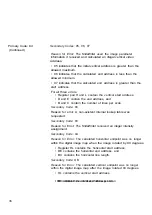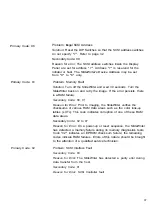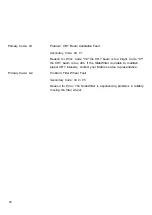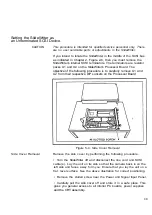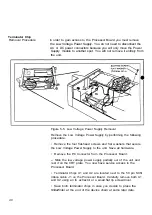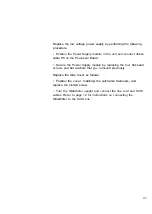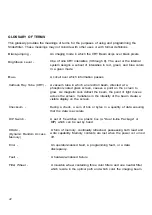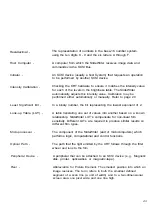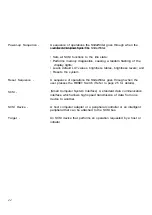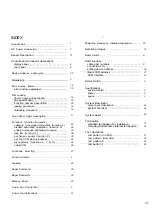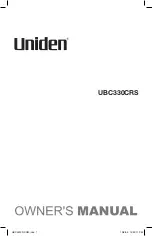
Hexadecimal -
Host Computer -
Initiator -
Intensity Calibration -
Least Significant Bit -
Look-up Table (LUT) -
Microprocessor -
Optical Path -
Peripheral Device -
Pixel -
The representation of numbers in the base-16 number system,
using the ten digits 0 - 9 and the six letters A through F.
A computer from which the SlideWriter receives image data and
commands via the SCSI Bus.
An SCSI device (usually a host System) that requests an operation
to be performed by another SCSI device.
Checking the CRT hardware to ensure it matches the intensity value
for each of the levels in the brightness table. The SlideWriter
automatically adjusts this intensity value. Calibration may be
performed either automatically or manually. Refer to page 29.
In a binary number, the bit representing the lowest exponent of 2.
A table translating one set of values into another based on a known
relationship. SlideWriter LUT's compensate for non-linear film
sensitivity. Different LUTs are required to produce similar results on
different film types.
The component of the SlideWriter (and of microcomputers) which
performs logic, computational and control functions.
The path that the light emitted by the CRT follows through the filter
wheel and lens to the film.
A peripheral that can be attached to an SCSI device (e.g., Magnetic
disk, printer, optical-disk, or magnetic-tape).
Abbreviation for Picture Element. The smallest position into which an
image resolves. The term refers to both the smallest defined
segment of a scan line (a unit of width) and to a two-dimensional
screen area one pixel wide and one line high.
43








